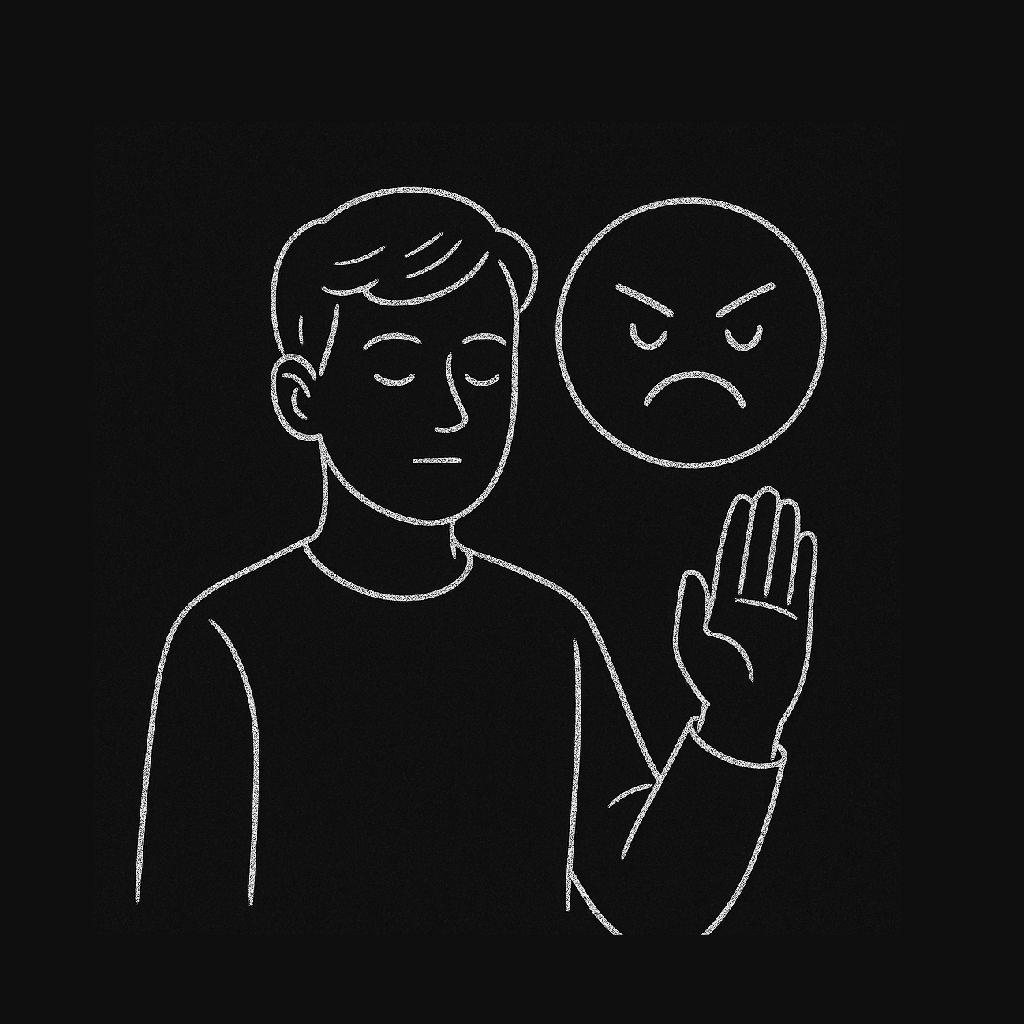Not A Subscriber?
Join a global group of ambitious readers on their quest to understand themselves, life, and business
There's more to emotional regulation than pausing
It’s funny how life works sometimes.
The day I had planned to start working on this perspective about emotional regulation and its role in sustainable peak performance, I twisted my ankle badly on my morning run.
Just like that, and the topic of emotional regulation was right in my face and daring me to get triggered.
What better way to tune into the writing process than by experiencing it firsthand?
When I was younger I would have been thrown radically off course.
I remember playing semi-professional football (soccer) as a teenager and twisting my ankle every once in a while. I would get so angry and feel that the injuries were unfair, and I would waste a lot of energy and focus brooding about it.
Thankfully I’ve learned a lot about emotions and emotional regulation since then and one of the key lessons has been “you are not your emotions”.
I’ve also found that we are often taught a simplistic version of emotional regulation, if we're even taught it at all. We’re given techniques or practices without fully understanding how emotions really work.
I want to give you a broader perspective shift behind emotional management, not just tactics.
If you just do the tactics but don’t understand why you do them, or don’t know how to adapt them to your situation, then they won’t be effective in the long run.
Emotions are necessary evolutionary responses
Emotions are fast, biological responses that evolved to help us survive.
They are deeply rooted in our nervous systems and often involuntary and automatic.
To make it practical, I like to say that emotions are signals that help us understand situations better.
Long before we had language, our ancestors relied on emotions to navigate threats and social dynamics.
For example, fear helped them escape predators. Anger protected their territory. Joy bonded tribes together.
Psychologists have outlined a set of primary emotions that are at the root of other emotions. Different versions exist, but I like Robert Plutchik’s wheel of emotions, which outlines eight primary emotions: joy, trust, fear, surprise, sadness, disgust, anger, and anticipation. All other emotions are combinations or intensities of these.
In addition, it is important to know the difference between emotions, feelings, and moods, because how you should relate and manage each one differs.
Emotions are instant, physical reactions to stimuli, like a flash of anger when you perceive that someone is criticising you. Emotions typically last a few seconds to a few minutes. You can’t always control emotions, but you can observe them so they don’t take over.
Feelings are subjective, conscious interpretation of emotions and the situation, for example feeling resentment against the person who you feel has criticised you. Feelings last from a few minutes to a few hours. You can influence feelings through self-awareness and monitoring your self-talk.
Moods are longer-lasting emotional states that can last for hours or even days. They can be triggered by a strong emotional reaction (for example feeling irritable all day because of the initial flash of anger) but are not necessarily tied to a specific event. You can shift moods through healthy habits, your context, and deliberate choices.
Emotions are not always correct
We get emotionally triggered when our brain perceives a threat.
When this happens your brain activates your fight-flight-freeze response (e.g. increased heart rate, dilated pupils, sweaty palms).
The response is automatic. For example, if you see a snake in the forest, your body is preparing you to fight, freeze (play dead) or run away by releasing adrenaline, pumping blood to your extremities (arms, hands and legs) and enhancing your focus.
The perceived threat can be physical (e.g. a snake), social (e.g. someone criticising you), or psychological (e.g. not living up to your own expectations).
The key word here is “perceived”.
You get the same fight-flight-freeze response if you see a piece of rope in the forest and mistake it for a snake. From an evolutionary perspective, it’s better for your survival to assume that something is a threat than to automatically get curious and trusting in the face of potential danger.
Hence you can be triggered even when a situation does not actually present a threat.
This can then lead to feelings and an inner dialogue which are not helpful. For example, you may get overly anxious before a presentation because you fear that people will ridicule you. Or you tie your identity to the achievement of specific goals and therefore freak out if anything gets in the way of your progress.
In the example above, you may perceive that a colleague is criticising you, when in reality the person might just have wanted to help you improve and become even better.
Emotions are signals, but they’re not always accurate. They tell us something might be a threat, but not necessarily what or why.
Unregulated emotions often lead to disproportionate reactions to a given situation.
Over time this can lead to anxiety, stress, and even physical illness.
Witness your emotions to regain perspective
Let's now look at what emotional regulation is and isn't. This is something I've confused in the past, as for a while I thought it was all about blocking out my feelings or pushing them away.
But emotional regulation is not about suppression, where you push down or ignore emotions. It's also not detachment where you numb your feelings, adopting a positive attitude to replace a difficult emotion, or telling yourself intellectually not to feel them.
All these things leave the emotions bottled up inside you, which eventually leads to an explosion or low-energy negativity such as resentment or sarcasm.
Emotional regulation is also not "fixing" your emotions.
Instead, you need to feel your emotions and witness them from a distance. Realise that you are not your emotions or your feelings. When you can see them as an object, you in turn become the subject and you can then choose what to do with the situation.
Healthy emotional regulation means being able to name what you feel, holding space for emotions without judging them, seeing the situation for what it is, choosing a wise response (not an impulsive reaction), and returning to your centre faster after a trigger.
In terms of sustainable peak performance, emotional energy can be seen as the quality of the energy that you carry around with you.
It’s about having the emotional stability to stay centred, focused, and wise even when things don’t go your way.
When you’re emotionally regulated, you’re less likely to be hijacked by triggers or thrown off course by unexpected setbacks. You conserve energy by not overreacting, ruminating, or spiralling. Instead, you deal with challenges in a grounded, effective way.
In the end, it’s not just how much energy you have.
It’s about channeling your energy in a positive and constructive direction rather than a negative and destructive direction in order to perform effectively and consistently over time.

A 4-step process for emotional regulation
Now we are ready to talk about tactics. Here is a 4-step process for emotional regulation that I learned at McKinsey, but many similar frameworks exist.
1. Notice. The first step is to notice as early as possible that you are being triggered. Watch out for physiological changes (e.g. heavy breathing, elevated heart rate), your emotions (e.g. anxiety, panic, anger, joy) and your inner dialogue.
2. Pause. Activating your thinking brain takes at least 6 seconds, so get into the habit of taking a few deep breaths, counting to 10, smiling, or even momentarily leaving the situation if needed. Focus on getting back to your centre.
3. Get curious. Shift from a frame of "life happens to me" to "I happen to life" and ask yourself open questions like "what's happening?", "what do I know for certain?", "what are my assumptions?", "what might the other person's perspective be if I assume positive intent?", and "what would I like to have happen?".
4. Choose a wise response. Ask yourself what a wise, values-aligned response in this moment would be. For example, you can feel anger without yelling, while still communicating clearly how you feel. You can feel sadness without shutting down. And remember that sometimes the best response is no response at all.
There are a few things you can do to increase the chances that you'll choose a wise response in difficult situations.
Start to notice when you get triggered so you can identify the people, places or situations that often trigger you. That way you can prepare yourself ahead of time.
When you have some quiet time, dig beneath the surface to understand why you got triggered and what the conscious and unconscious story is that you're telling yourself. By shining a spotlight on deeper needs and fears you start to gain more power over them.
Mindfulness meditation helps you in-the-moment as it enhances your ability to stay present, stay calm, and notice your physical and emotional state and inner dialogue in real-time.
After you have been triggered, continue to process your emotions. Allow yourself to fully feel them and let them move through you, without reacting to them.
When emotions are felt fully, they often pass within a few minutes. Your thoughts can, however, keep them alive for longer, so remember to keep going through the 4-step process above in situations like this.
When I twisted my ankle, my immediate thought was "not again."
I felt a wave of sadness, not anger like I used to. But I didn’t attach myself to it. I acknowledged that I was feeling sad (not that I was sadness), and I was ok with that.
In parallel I asked myself what I needed in the moment. Did I need to pause, go on with my day, or something else?
I witnessed my emotions and feelings as an observer, without trying to change them.
Final reflection
I sometimes get asked if people who practice emotional regulation never get triggered.
That would be nice, but we're all human, so everyone gets triggered.
What I believe, though, is that you can drastically reduce the proportion of times that you get triggered, and you can drastically reduce (and almost eliminate) the amount of times you have a disproportionate response to a trigger.
Your default mode can be to see situations with openness and curiosity rather than as threats.
You can feel anger and still speak with clarity.
You can feel fear and still take the next step.
That’s the power of emotional regulation.
And like any skill, it's learnable, and the best way to practice is through day-to-day life.
So the next time life throws something at you, such as a critical coworker, a tough conversation, a twisted ankle, see it as an opportunity to step into the best and wisest version of yourself.
PS.
This past week has reminded me how easy it is to take walking for granted. Even something as simple as going to the fridge to get a glass of water becomes complicated on crutches. Consider this an invitation to pause and appreciate your legs, your feet, your hands, your body, and your health ❤️

About the author Nicolai Nielsen
I am the bestselling author of 3 books, former McKinsey Academy Associate Partner, and the founder of Potential Academy.
My mission is to raise global consciousness through education and inspiration.




